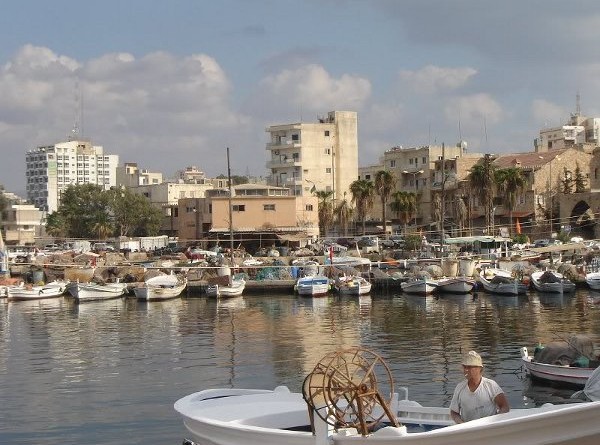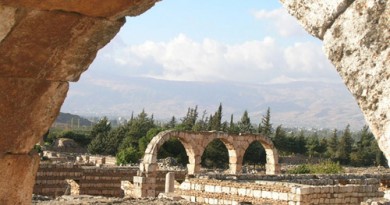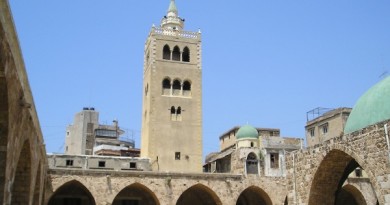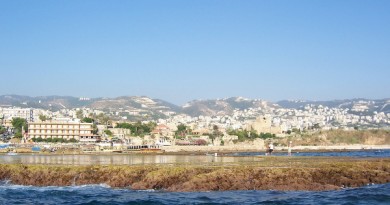Tyr in Lebanon
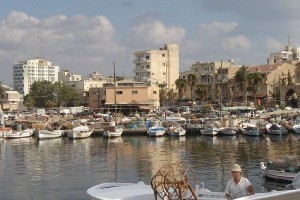 Tyr is a Lebanese city, founded in the third century BC by the Phoenicians. Located close to the Israeli border, 20 km away. The area is under the close supervision of the Israeli troops, but if the situation is calm, there is no reason to worry and fear before visiting the city. Tyr is the mother Phoenician people.
Tyr is a Lebanese city, founded in the third century BC by the Phoenicians. Located close to the Israeli border, 20 km away. The area is under the close supervision of the Israeli troops, but if the situation is calm, there is no reason to worry and fear before visiting the city. Tyr is the mother Phoenician people.
On the basis of the city tells a legend. The appearance of Tyr associated with the Phoenician god Melkart, who was the son of the goddess Astarte. According to legend, it was at the place of birth and was laid Melkarta ancient Phoenician city. The same legend says that even before the first settlement on the site of Tyr, this small piece of land to move freely throughout the Mediterranean.
Later on orders Melkara found the place where he was born and sacrificed eagle when rock islet blood fell majestic birds, the island stood at a distance of about 800 meters from the shore. In the 28 th century BC, the villagers built a temple in honor of Melkart, in gratitude, he allowed citizens to colonize a large enough section of the Mediterranean Sea. Before entering the temple there are two columns of gold 9 meters high each. According to the temple went barefoot, held here daily ritual of sacrifice, which was followed by dancing.
In the 6th century BC, Tyr was destroyed by the army of Nebuchadnezzar, but their goal is not achieved conquerors, they wanted to get the gold, jewelry, and most people had time to gather with you all the property and move to an island off of Tyr. It built a new Tyr. Mainland, which was located next to the two islands, was their protection from storms. In the 9th century BC island connected to the mainland by an isthmus on the orders of King Hiram, thereby forming an artificial headland.
In the time of Alexander the Great Isthmus was demolished and in its place built a pier, which was significantly greater than the isthmus. Macedonian personally poured the first two buckets of sand at the base of the dam. All work on the construction of the dam were carried out manually. In the bottom of the sea were killed trunks cedars brought from the mountains of Lebanon to fully meet building materials residents were forced to demolish their homes. Thus, the island has evolved into a peninsula.
Incidentally, it is worth noting that Tyr – the only city not surrendered to Alexander the Great without a fight, people prefer a bloody war and humiliating peace, as they could have fought for the honor of his native city. Some details of the battles and the heroic actions of people that have survived to the present day. When Alexander the Great ships anchored, thereby blocking the harbor, the Tyrians swam to them and cut the rope anchors. After this incident, on the orders of Alexander the Great on all vehicles have replaced the rope anchor chains.
The siege lasted seven months, after which yet Alexander the Great seized power in his own hands. Much of the population of Tyr was killed and who did manage to survive, they were soon sold into slavery. It was during the reign of Alexander the Great became a rare Lebanese cedar tree, it was caused by the fact that in addition to Alexander dam cedar is used in the manufacture of ships, pine forests fight masse. In the time of Phoenician Tyr was known for his glass and fabrics. Tyr dealers held a peaceful expansion of the Mediterranean with the aim to find the sources of raw materials and sales markets. That is the first city of Tyr, where they began to use the money – hammered coins.
On the development of the influence of Phoenicia. Tyr quickly developed. With Tyr began a series of sea expeditions in the Mediterranean, including Spain and beyond Gibraltar. In the 18th century the city became one of the most important suppliers of building materials of all the Mediterranean coast. At different times, the city was dominated by different countries and rulers, experienced many events, the memory of which is still interesting monuments, temples, ruins and more. Tyr is also an important religious center, it is where the first Christian communities. Mentioned the city and in the Bible as one of the places visited by Jesus Christ, then he made the first miracle.
Since 1979, Tyr is protected by UNESCO as a city belonging to one of the world’s treasures. Now the old part of Tyr on a peninsula, and new – on the mainland. Hotels in the city a little (about 2-3), but the tourists problems settling does not occur, places for everybody. The prices for rooms in hotels quite reasonable.
Tourists are mostly attracted by the ruins of the Roman Empire period of Tyr. Up to now perfectly preserved Roman road leading to the Arc de Triomphe, which in Roman times was the entrance to the city. On both sides of the road all the way there are many sarcophagi, carved in stone and marble. And one of the sides of the road accompanied by an aqueduct. In Tyr was built racetrack, the ruins of which are well preserved. Each summer at the track, a festival of arts. In the time of the Roman Empire Hippodrome could seat 20,000 spectators, and its length is 480 meters.
In Tyr should also look Eshmuna Palace, the Colosseum, two-port time of King Hiram, the ruins of the temple of the Crusaders. Perhaps the most colorful part of Tyr – a fishing harbor: quiet marina, lots of fishing boats, workshops, where these same boat doing the technology, which is constant over the last several centuries. You can relax in one of the cafes or restaurants in the harbor.
Walking from the fishing harbor in the direction of the lighthouse, you can see the excavations of al-Mina. Sure to take a stroll there and get to know the city as it was centuries ago. At the entrance is a large commercial area of the Roman Empire, after passing through the area, on the main street you are greeted by the theater. Once there were water games. The theater is a rectangular building, seats arranged in five tiers, and placed around the theater system tanks. Per theater should sports complex with saunas in which to train fighters.
Also a very interesting place is the Cathedral of the Holy Cross, built in the 12th century.Who’s left of the base of granite columns, and before the cathedral was the place of coronation of the rulers of the kingdom of Jerusalem. According to some, it is here that buried the remains of Frederick Barbarossa, the eminent German emperor. In the days of Phoenicia on the site of the Cathedral of the Holy Cross was the temple of the god Melkart, who was the patron of Tyr. Every year, a festival in Tyr, where are the folk artists from all over the Mediterranean. Hold the festival on the ruins of the Roman Empire Stadium. If you wish to learn more about the East, its culture, then you should definitely visit the Festival of folk artists in Tyr.
Although tourism infrastructure is not as developed Tyr as, say, Beirut, Tripoli, but still need to visit the city. Tyr is an ancient city with a rich and interesting history, formed over thousands of years. And it is not just the story of the city, a piece of history of Lebanon and the Middle East. The old part of the island city and the newer continental full of interesting monuments, museums, ancient and medieval buildings, the ruins of the once majestic buildings.

